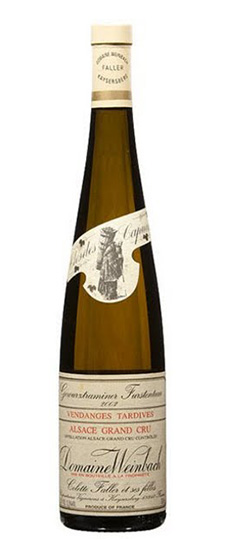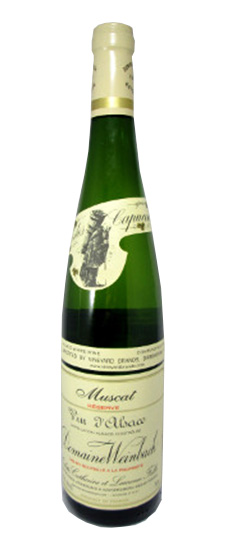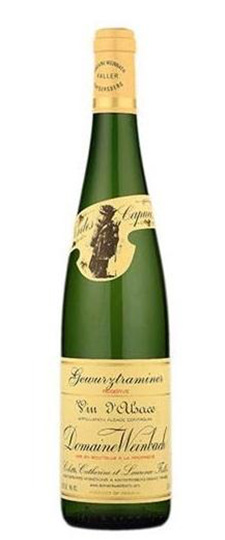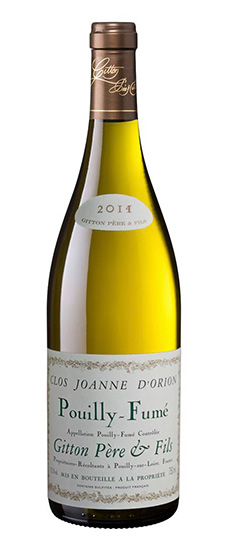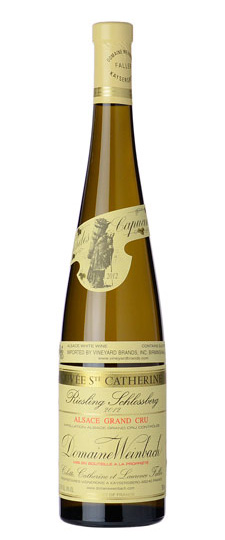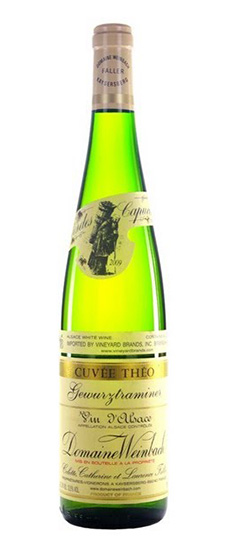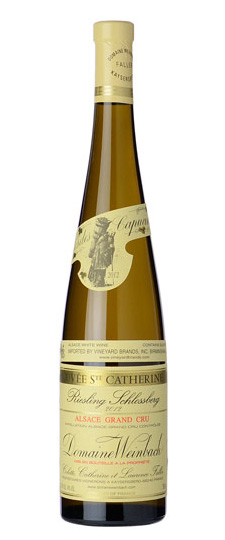Wine Score
Grape Variety
Gewurztraminer Wine
Gewurztraminer (Gewürztraminer in German-language areas) is a pink-skinned grape variety that produces some of the world’s most distinctive aromatic wines. Its perfumed style is somewhat polarizing; fans adore its intense floral scent and sweet-spice flavors, while detractors lament its low acidity and lack of subtlety.
Gewurztraminer’s parentage is hard to trace. Modern research suggests that it is the aromatic mutation of Roter Traminer (Savagnin Rose), and therefore part of the ancient Savagnin-Traminer group of grape varieties, which have identical or near-identical DNA profiles. As such it is hard to locate a precise area of origin, though Savagnin is thought to have originated in what is now southwest Germany.
Gewurztraminer Grapes
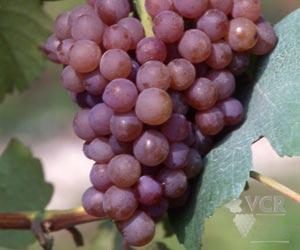 Literally translated, Gewürztraminer means “spiced Traminer” (Traminer Aromatico in Italian). The second part of the word suggests the grape may have origins in Tramin (Termeno) in the Alto Adige region. But while documents mentioning wines from Tramin date back to the 1200s, the spicy variant of the Savagnin Rose grape did not exist in the region until the 19th Century. Recent studies suggest that German growers of the Gewürztraminer/Savagnon Rose grape created the confusion by naming the variety after the wines of the Tramin region, which by the 1400s were attracting international acclaim.
Literally translated, Gewürztraminer means “spiced Traminer” (Traminer Aromatico in Italian). The second part of the word suggests the grape may have origins in Tramin (Termeno) in the Alto Adige region. But while documents mentioning wines from Tramin date back to the 1200s, the spicy variant of the Savagnin Rose grape did not exist in the region until the 19th Century. Recent studies suggest that German growers of the Gewürztraminer/Savagnon Rose grape created the confusion by naming the variety after the wines of the Tramin region, which by the 1400s were attracting international acclaim.
The best examples of Gewurztraminer are generally regarded as being from the grand cru vineyards of Alsace. It could even be argued that Alsace is the spiritual home of Gewürztraminer, despite the fact that it is not its ancestral home and that Gewürztraminer accounts for less than one-fifth of vineyard area in the region.
Gewürztraminer, as we know it today, arrived in Alsace from the Pfalz region – closer than most wine regions of France. The rich clay soils present in Alsace proved an ideal environment to produce full-bodied Gewürztraminer wines. The richness of dry, late-harvest, (vendage tardive), and botrytized very sweet (Sélection de Grains Nobles) Gewürztraminer wines in Alsace set the benchmark for which the variety is judged, and it is one of the grape varieties along with Riesling, Muscat and Pinot Gris which can be produced at Alsace Grand Cru level.
The primary aromatic descriptors used to define Gewürztraminer are typically lychee, rose petal, Turkish delight, tropical fruit and perfume. On the palate it is marked by its full texture, low acidity, stonefruit (mango, peach and apricot) and spicy (ginger and cinnamon) flavors.
Somewhat confusingly in Australia, the variety is often referred to as simply Traminer. The confusion is amplified by the recent discovery that a small amount of Savagnin Blanc – aka Traminer – is grown in the country, having been misidentified as Albarino for many years prior to 2009.
Notable examples of Gewürztraminer produced outside Alsace are from New Zealand, Oregon, Washington, Germany and northern Italy. It is also made under a wide number of synonyms in eastern Europe, but these wines are rarely exported.
Synonyms include: Traminer Aromatico, Traminer Musqué, Traminer, Gentil Aromatique, Savagnin Rose Aromatique.
Food matches for Gewurztraminer include:
Stir-fried pork with pickled plum (dry)
- Crayfish laksa (dry)
- Pannacotta (sweet)
- Enjoy this video about Gewurztraminer, from Sonoma Valley’s Kunde Family Estate.
Region
Alsace Wine
Alsace, in the far north-eastern corner of France, stands out from other French wine regions thanks to its strong Franco-Germanic influences. These are the result of the region having switched back and forth between German and French sovereignty in recent centuries – and are evident not only in Alsatian architecture and culture, but also in the wines.
The Alsace region lies between the Vosges mountains and the French border with Germany, marked by the Rhine river. A long, thin region, it measures 115 miles (185km) north to south and just 25 miles (40km) from east to west. The key viticultural areas here are all located on the lower hillsides of the Vosges, on slopes with east and south-easterly aspects.
Alsace
A February morning in Alsace
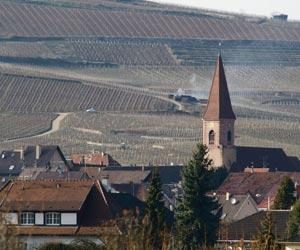 The Vosges play a vital role in defining the region’s terroir; they not only provide protection from the prevailing westerly winds, but also cast a rain shadow over the area, contributing to the low rainfall of its continental climate. They are at their most dense in the southern half of Alsace, where the peaks reach roughly 4600ft (1400m). The glacial activity which created the mountains has also significantly impacted the region’s topography and soils. These vary from sandstone, granite and volcanic rock types in the foothills, to clay-rich limestone and marlstone on the alluvial plains below.
The Vosges play a vital role in defining the region’s terroir; they not only provide protection from the prevailing westerly winds, but also cast a rain shadow over the area, contributing to the low rainfall of its continental climate. They are at their most dense in the southern half of Alsace, where the peaks reach roughly 4600ft (1400m). The glacial activity which created the mountains has also significantly impacted the region’s topography and soils. These vary from sandstone, granite and volcanic rock types in the foothills, to clay-rich limestone and marlstone on the alluvial plains below.
Alsace is the only French wine region to grow significant quantities of Riesling and Gewurztraminer. Both of these varieties are more commonly associated with German wines, and serve as a reminder of Alsace’s history. Pinot Gris, a variety typically marginalized in other French regions as a blending component, is another of the region’s specialties. Sylvaner and Muscat are also traditional Alsace grape varieties, as are Chasselas and Auxerrois although the latter two tend to be used not in single-variety wines but in blends (see Edelzwicker).
Alsace’s wines are produced under three key appellations: Alsace and Alsace Grand Cru for still white wines (both sweet and dry), and Cremant d’Alsace for sparkling. Almost all wine produced in this region fits into one of these three designations.
White varietal wines make up 90% of production here, from the varieties stated above. Key variations in wine styles are marked by their residual sugar levels, which cover the entire sweetness spectrum from bone dry to lusciously sweet. In 1983, the official terms Vendanges Tardives and Selection de Grains Nobles (see French Wine Label Information) were introduced to define and categorize sweet Alsace wines. They remained unique to the region for some time, but are now used in other French appellations such as Jurancon and Coteaux du Layon.
Although significantly outnumbered by white wines, red wines are also made here, mostly from Pinot Noir. Alsace Pinot Noirs are typically lighter-bodied and more rustic than those produced in the variety’s homeland Burgundy, 140 miles (225km) to the south-west. That said, climate change and warmer summers are leading the region’s winemakers to produce noticeably more powerful styles of Pinot Noir.
Dotted along the length of the region are 51 sites marked out as being of particular distinction; the Alsace Grand Cru vineyards.
Producer Notes
About Domaine Weinbach
Domaine Weinbach is a leading wine estate in the Alsace region. It is named after the “wine brook”, a small stream that runs through the main property, which is a former monastery near Kayserberg. The estate is known for its wines made at varying levels of sweetness from Riesling, Pinot Gris, Pinot Blanc, Sylvaner, Gewürztraminer and Muscat.
Domaine Weinbach
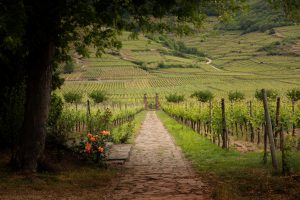 Unusually for the region, Weinbach only uses estate-grown grapes. It has holdings in four nearby Grand Cru vineyards on the slopes of the Weisbach Valley – Schlossberg, Furstentum, Mambourg and Marckgrain. Weinbach also owns the famous 5-hectare (12-acre) monopole, Le Clos des Capucins, which surrounds the cellars just below Schlossberg, and the Altenbourg vineyard adjacent to Furstentum.
Unusually for the region, Weinbach only uses estate-grown grapes. It has holdings in four nearby Grand Cru vineyards on the slopes of the Weisbach Valley – Schlossberg, Furstentum, Mambourg and Marckgrain. Weinbach also owns the famous 5-hectare (12-acre) monopole, Le Clos des Capucins, which surrounds the cellars just below Schlossberg, and the Altenbourg vineyard adjacent to Furstentum.
All of the estate’s 28ha (69 acres) of vineyards have been farmed biodynamically since 2005 and are certified by Ecocert and Demeter. After a gentle, gradual pressing, the juice is slowly fermented in old oak vats using indigenous yeasts.
For several decades the estate was run by Colette Faller and her daughters, winemaker Laurence and sales director Catherine. Laurence died tragically young from a heart attack in 2014, and her mother passed away the following year. Catherine Faller now runs the estate with her sons.

